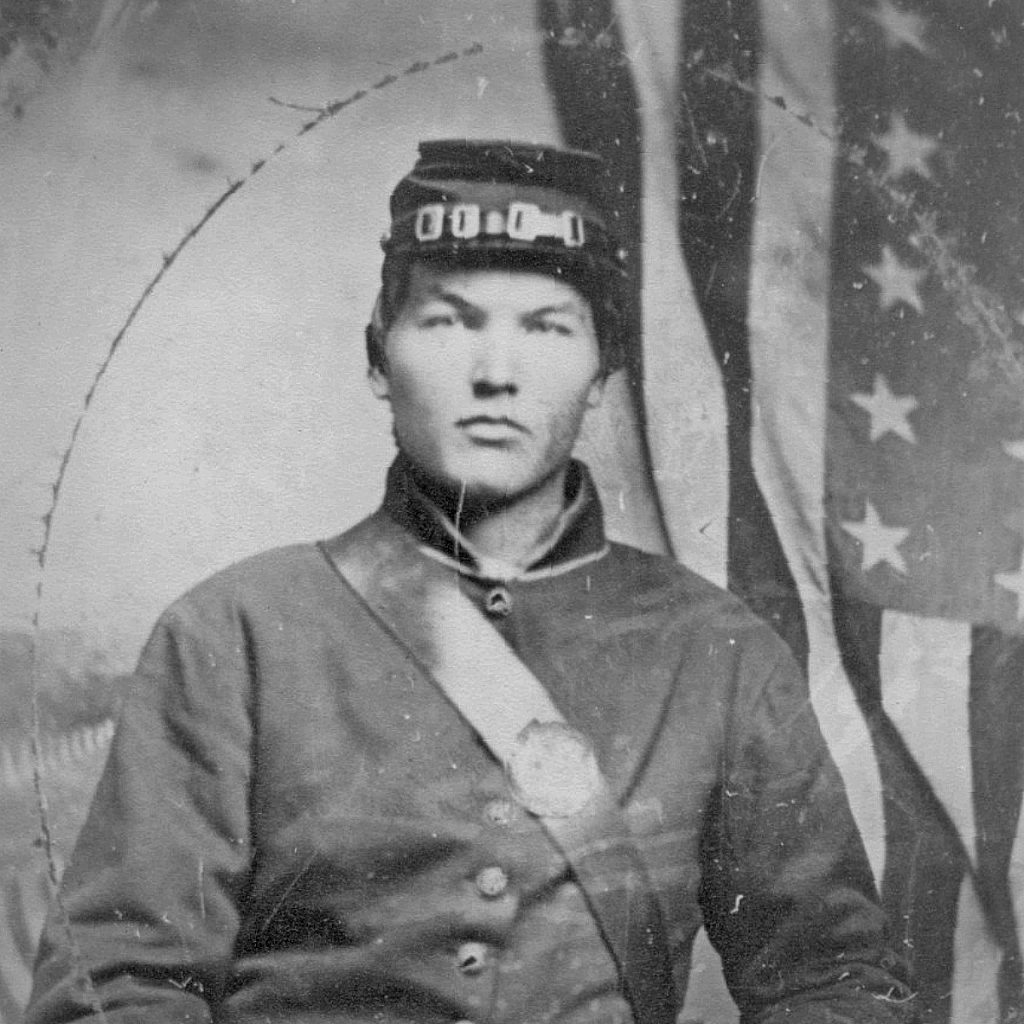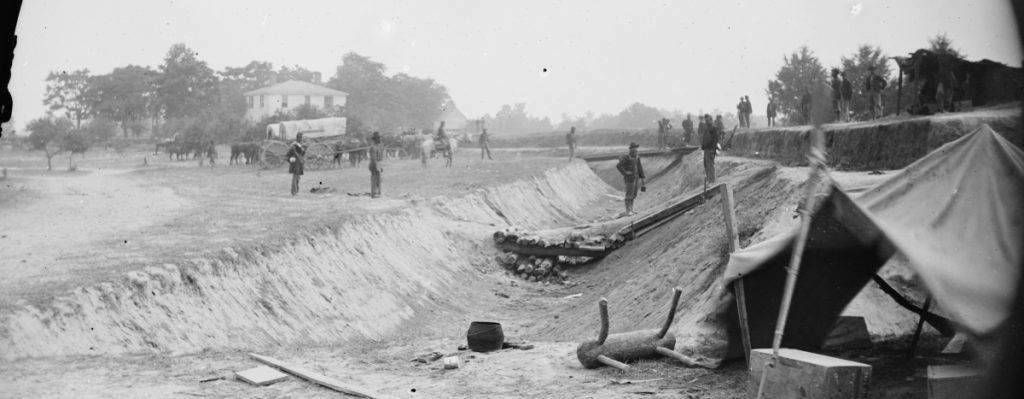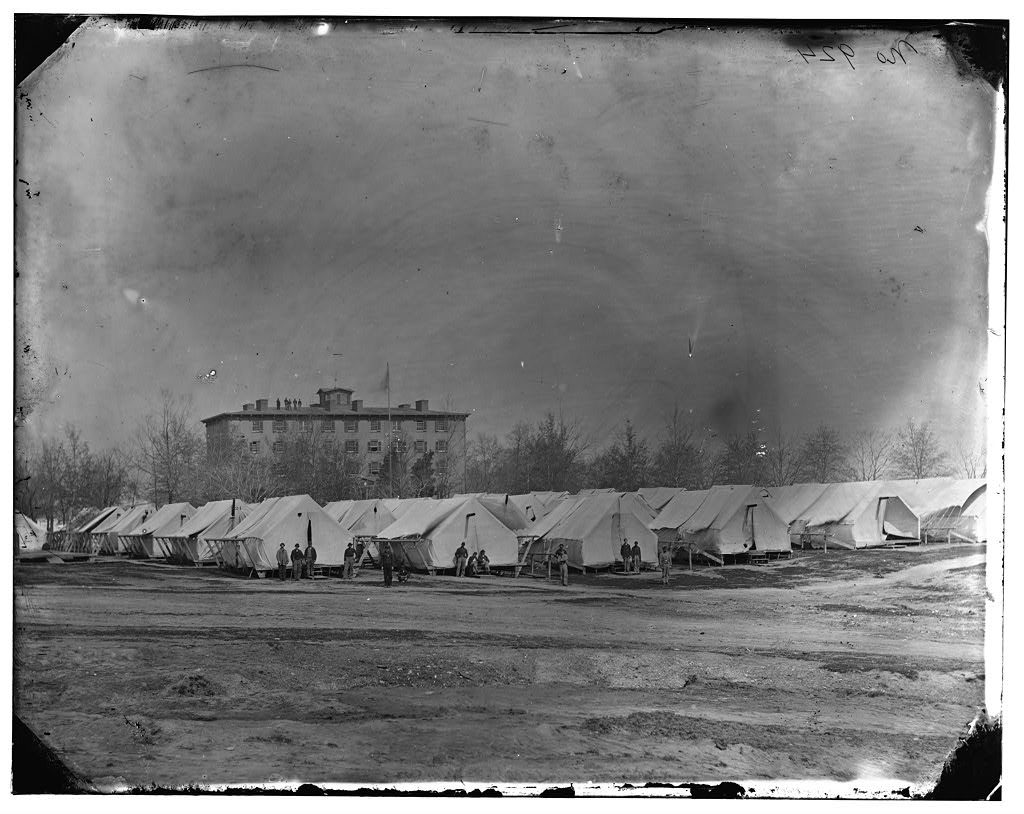Table of Contents
Museum members support scholarship like this.

A stone in Peleg Bradford’s shoe may have saved his life.
On June 17, 1864, while on the picket line outside Petersburg, Virginia, Private Bradford crouched down to remove the rock from his shoe. Just then, a Confederate sharpshooter took aim and fired. The bullet smashed through Bradford’s leg, which was raised as he attempted to put the shoe back onto his foot. “He always said he was sure that the Rebel sharpshooter had aimed for his head,” wrote Richard Bradford, Peleg’s grandson, “He always figured he swapped his knee for his head.”
Private Bradford’s comrades in the 1st Maine Heavy Artillery moved him from the site of his wounding to a field hospital in the rear.

At the field hospital, surgeons recognized the danger in such a wound. The bullet had ripped through Bradford’s right knee. The 22-year-old private lost the lower half of his right leg to the surgeon’s blade that day. The surgeons decided, as they did in many cases, that nothing else was to be done.
Private Bradford was evacuated from the front at Petersburg to a general hospital in Washington, DC. The young soldier began his life as an amputee in Columbian Hospital in the Union capital. From his hospital bed, he wrote to his mother to inform her of his injury a week later. “I am in bad shape now,” he wrote. “My leg is very painful now, and I can’t rite [sic] but a very little this time.”
Bradford had another loved one on his mind as he began his convalescence. During his nearly two-year stint in the Union Army, he wrote frequently to his “friend” back in Maine: Cynthia McPherson. He wrote to her on July 13, 1864:
Dear Friend
I now improve a few moments time in writing to you. I am sitting up now, but I don’t know how long I can sit up. You wanted to know how my leg got along. It is getting along first-rate… I am in hopes that I shall be at home by the last of next month.
Oh Cynthia – God knows how much I have suffered since I lost my leg, but it is getting along first-rate now. I would like to write you a good long letter, but I can’t. I can only write short letters, so goodbye for this time.
The amputee’s recovery started well and within a few weeks, Bradford recorded that “the doctor said that he never saw anything get along so fast in his life as my leg did.” Soon, he was out of bed and learning to grapple with his disability.

In a letter to Cynthia on August 1, Bradford recalled his first attempts at using the crutches supplied to him in the hospital.
I have got so that I can get out of bed and stand up on one leg. It was fun to see me the other day when I was trying to walk on crutches and… fell flat on the floor, and I have not tried it since.
It is very warm here now. It is enough to kill a man to have to lie a bed as long as I have in this hot weather. I will hardly dare to be seen when I get home with only one leg, but never mind, I lost it in a good cause.
Although Bradford’s recovery picked up pace, he remained in the hospital for nearly a year, until the war’s conclusion in 1865. He returned to Maine and adjusted to life as a disabled veteran.
As for his comrades in the 1st Maine, many were not as lucky. On the day following Peleg’s wounding at Petersburg, the regiment made an infamous charge on the heavily defended Confederate works. In less than 20 minutes, more than 600 Mainers were killed, wounded, or missing. Peleg’s younger brother Owen survived the attack, but died from injuries received later in the Petersburg Campaign, in October 1864. He was 16-years-old.
Peleg Bradford made a full recovery and returned to live out a full life in Maine with Cynthia and their eight children. He passed away in his hometown in 1918.
Learn more in this presentation from the author
Want to learn more? Follow us on Facebook and Twitter to discover more stories from Civil War medicine!
Become a museum member and support our educational programs and research like this or donate to help preserve prosthetic limbs.
BECOME A MEMBER Arm and a Leg Campaign
About the Author
Discover more about Peleg Bradford’s experience at war in the National Museum of Civil War Medicine. Visit the museum and read more about Bradford, his wounding, and the role of Civil War medicine in the lives of the average soldier. Bradford’s prosthetic limb is also on display.
The letters referenced here were collected by the Bradford family and published 1997. “No Place for Little Boys:” Civil War Letters of a Union Soldier is available in the museum store at the National Museum of Civil War Medicine.



Leave a Reply
You must be logged in to post a comment.